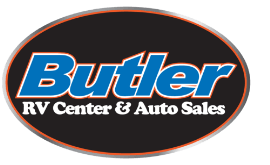Spring Camper Readiness Checklist
Published on Feb 16, 2021Soon winter will be behind us and our dreams of camping will be a reality. If you are bringing your RV out of storage then use this guide to get your camper ready for your first spring camping trip.
Check your tires: RV tires can lose 2-3 PSI of air pressure each month, and if it’s stored somewhere cold it could be more. Check for underinflated tires, uneven wear, or cracking. Be sure to check your spare as well.
Check the Exterior: Look for cracks, leaks and check all seals. Inspect the weather stripping around windows & doors. Be sure to replace any sealant that has cracked or peeling. Be sure to check any hitching components for rust or damage. Also check vents, fans, and covers.
Check RV batteries. Check your batteries for corrosion and cracks. If you find cracks, then it’s time to replace the battery. Batteries can lose 10% of their charge each month. It could take a while to recharge them. House batteries should recharge when you plug the unit in. Ensure a good charge for operating all of your 12V items, such as jacks, slide-outs, and lights. Be sure to check the water levels and refill. If the water level is below the plates, water should be added before charging the battery, as the plates should always remain covered.
Reverse Plumbing Winterization: Follow the steps for your camper to remove antifreeze from plumbing and sanitize. Be sure to check the specifications for your RV. Your system might have different bypass valves for the water heater. Follow these steps to flush antifreeze from your camper system:
- Turn the water pump on.
- Open all water faucets, including sinks and indoor and outdoor showers.
- Run water through the system and allow water to run for several minutes.
- Flush the toilet while the pump is running.
- When the water comes out clear, close the faucets and turn off the pump.
- Take the water heater out of bypass mode.
- Replace all water filter cartridges.
- Dump your gray and black water holding tanks.
- Now is also a great time to check pipes and pump for leaks. Use a flashlight to check pipes under sinks and the toilet. Check your sewer hose as well and make sure there are no cracks.
Sanitize Water System: These steps help remove harmful bacteria or mold that may have developed over the storage months.
- Close all drains and install drain plugs.
- Use one-quarter cup of household bleach for every 15 gallons your freshwater tank holds.
- Pour the bleach into a one-gallon container and fill it up with water.
- Add this mixture into the freshwater tank fill.
- Fill the fresh water tank with potable water.
- Turn on the water pump and open all faucets.
- Run the water until you can smell the bleach and then close the faucets.
- Let the solution sit for several hours but never more than 12 hours.
- Drain all of the water.
- Refill the freshwater tank with potable water and flush system by repeating the previous 4 steps.
- Allow the water to run until it no longer smells like bleach.
Replace Propane Tanks: Reinstall propane tanks on their mounts, secure and connect hose(s). Check for leaks by opening gas lines (after connection) and applying soapy water on connectors. The solution will bubble if there is a leak. Tighten and repeat the process to check. Be sure to fill your propane tanks before your trip.
Test Appliances: Be sure that everything is working properly before you hit the campground.
- Propane appliances. With propane lines on, check your stove/oven, fridge, furnace, and water heater (with full water). It may take a bit of time for the gas to get through the lines.
- Check 120-volt appliances. Be sure to check outlets, fridge (in power mode), air conditioner, and microwave.
- If your appliance fails at any point, contact us and get it repaired by a certified technician.
Check Generator: Refer to your generator’s owner manual for its recommended maintenance. Most include checking oil, check the exhaust, and perform regular service intervals. Once these have been checked, start your generator. Once it has run for a bit, then start your AC to ensure it can run under a load.
Check the Rest: Just like your home, an RV has a lot of appliances designed to keep you safe.
- Check air filters and replace them.
- Check and replace batteries in carbon monoxide detector, smoke alarm, and LP gas leak detector.
- Check fire extinguisher. Replace or recharge if needed.
Don’t forget state requirements. Make sure you have a valid inspection, registration, and insurance.
We also can help you with any and all parts of this process. Give us a call at 724-282-4161.
Happy Camping!

